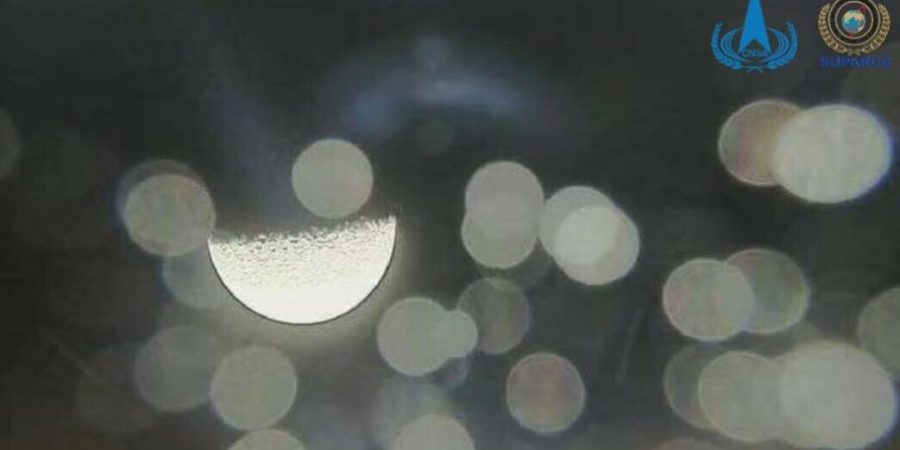Pakistan’s lunar satellite sends initial images from space

ISLAMABAD, May 10 (APP): Pakistan’s lunar satellite, iCUBE Qamar has sent the initial images from orbit after successfully completing three rounds of the moon.
The images were released by Pakistan’s Space and Upper Atmosphere Research Commission (SUPARCO) on Friday.
The satellite, iCube Qamar has completed three lunar orbits after being launched aboard China’s Chang’e-6 spacecraft from Hainan, China on May 03.
According to the Pakistan Institute of Space Technology (IST), Pakistan’s lunar CubeSat iCUBE-Q was successfully deployed in orbit at 1314 hours on May 08 from Chang’E-6.
IST which is a leading high-end university of Pakistan had the distinct honor of launching a Cube Satellite ICUBE-Qamar (ICUBE-Q) in Lunar orbit onboard China’s Chang `E-6 Mission.
CubeSats are a class of small satellites used by academic institutes for experimental and research purposes in Low Earth Orbits, generally with an altitude of less than one thousand km. However, these satellites are now finding many applications in higher orbits and deep space missions.
Moon is in an elliptical orbit at an average distance of around 384 thousand km from the earth which makes it challenging
to communicate with and control small satellites.
The opportunity to release CubeSat in Lunar orbit from Chang-E`6 mission was offered by China National Space Agency (CNSA) through Asia Pacific Space Cooperation Organization (APSCO) to APSCO member states.
After thorough evaluation, Pakistan’s proposal was accepted out of all APSCO member states.
The design, development and qualification of ICUBE-Q was led by faculty members and students of the IST in collaboration with China’s Shanghai Jiao Tong University (SJTU) and support from Pakistan National Space Agency SUPARCO.
ICUBE-Q carried two cameras as payload for imaging Lunar surface and Earth/Moon images from Lunar orbit besides having 3-axis altitude control for desired orientation, onboard computer, thermal control, telemetry and tele-command and payload data communication modules for connecting through deep space network.
Chang’E6 rocket took five Earth days to reach Moon orbit. ICUBE-Q was deployed on May 08 in a carefully selected 12-hour elliptical orbit that allowed imaging of the desired Lunar surfaces. IST is a federally chartered university that pioneered the development of CubeSats in Pakistan by launching its first CubeSat “ICUBE-1” in Low Earth Orbit in November 2013.
According to the Head of Electrical Engineering and Computer Science Department at IST and co-lead on the satellite project, Khurram Khurshid, “This is Pakistan’s first deep space mission which is a historic moment that would pave the way for launching other deep space missions in the future”.
“Around 100 students, along with the faculty members, contributed to various aspects of the satellite, including electrical engineering for electronics, aerospace engineering for control systems, computer science for software and mechanical/materials engineering for identifying materials suitable for the moon’s harsh environment, ” he said.
Related News

Visa-free entry to UAE with diplomatic, official passports
DNA ABU DHABI: In a positive development, Deputy Prime Minister and Foreign Minister Ishaq DarRead More

CDA transforms Islamabad with smart infrastructure, green initiatives: Chairman
ISLAMABAD, JUL 27: /DNA/ – The Capital City of Pakistan, Islamabad is admired for itsRead More


Comments are Closed